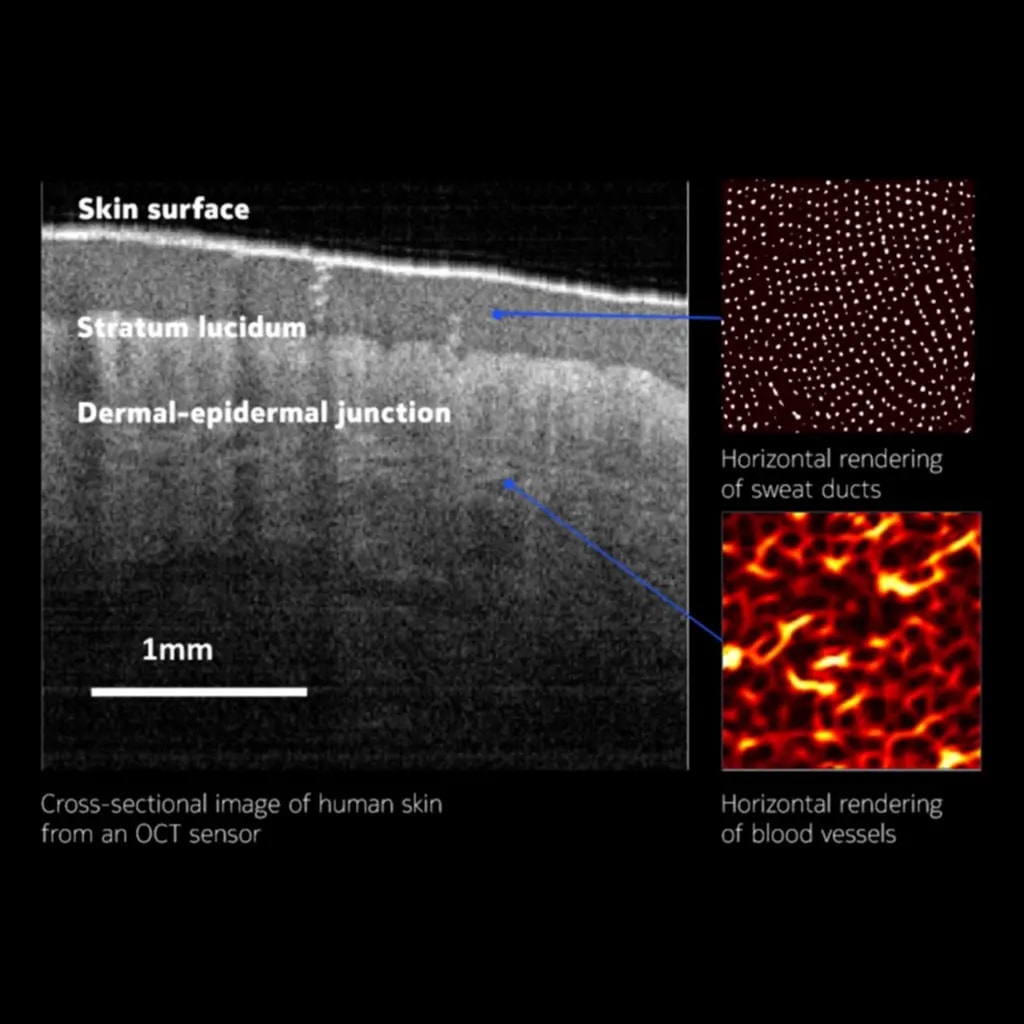Can novel optical sensors detect the next pandemic?

The appearance of physical symptoms often doesn’t signal the beginning of a disease but rather when the disease has already firmly taken hold in the body. Many of the symptoms of COVID-19, for example, can take anywhere from five to 14 days to appear after the infection has occurred. As the world has quickly learned, people are infectious during this prolonged incubation period, resulting in the silent and widespread propagation of the virus that has created the pandemic we face today.
But what if we had the ability to continuously and precisely monitor biophysical changes as they occur and could detect the presence of an infectious pathogen before physical symptoms manifest? That would give us more time to take appropriate precautions to protect the health of individuals and communities. The current COVID-19 pandemic highlights the need for a continuous monitoring system able to detect minute variations in physiology in indivduals that portend the outbreak of a disease in the larger community.
Optical coherence tomography (OCT) is an optical technique for the noninvasive 3D imaging of human tissue capable of measuring discrete physiological changes in the body. OCT was developed in the early 1990s and has since gained adoption in several fields, including opthalmology, cardiology and dermatology. While OCT has proven to be an invaluable diagnostic tool to detect early stage disease, it is currently restricted to professional healthcare use as OCT systems cost upwards of $100,000 and are roughly the size of a small filing cabinet. Consequently, it is not possible to use OCT for the continuous monitoring of people in their daily lives required for early detection of a potentially epidemic disease. But if OCT systems could be made inexpensive, portable and unobtrusive, then everyone could be continuously monitored, and early infection detected, which could very well stop the next pandemic before it happens.
Innovation through miniaturization
The scientists and engineers at Nokia Bell Labs have spent the past three decades developing integrated photonic technologies for telecommunications that miniaturize the footprint of optical links, reducing power use and increasing data speeds while lowering noise and cost. The fundamental building blocks of these systems are identical to those used in OCT but until now have not been leveraged for OCT systems.
“We have the technology and expertise to make continuous physiological monitoring with OCT a reality,” said Michael Eggleston, Augmented Human Devices Group Leader at Nokia Bell Labs and chief architect of its OCT miniaturization technology. Using advanced photonic design, Eggleston and his team have fabricated the world’s first portable, battery-operated, swept-source laser OCT system. Roughly the size of a large cell phone, it can be produced at a fraction of the size, cost and power consumption of traditional systems.
Nokia Bell Labs prototype miniaturized OCT system. Future OCT sensors will be far smaller.
This drastic reduction in size and cost will allow for widespread adoption of the technology to healthcare profesionals such as your local general practitioner. However, Eggleston’s team sees a future where these devices will be small enough to seamlessly integrate into the clothing we wear on a daily basis, providing unobtrusive and continuous physiological monitoring for everyone.
“Through miniaturization we can do things with existing technologies that were never thought possible,” Eggleston said.
Getting under the skin without a scalpel
With the advances in diagnostic technology over the last few years, many of the body’s internal processes can now be accessed externally. The dermis layer, found directly below the skin’s surface, provides a wealth of physiological information about health and disease. It contains nerve endings, oil and sweat glands, hair follicles, blood vessels, and interstitial fluid that closely parallels blood chemistry. OCT can optically probe about 2mm into human tissue, making it ideal for imaging and monitoring a wide range of time-varying biophysical changes taking place in the dermis. For instance, OCT can detect changes in sweat gland function and blood vessel diameter triggered by variations in body temperature, stress levels, biochemical concentrations, respiration, circadian rhythm and heart rate.
OCT can also image biophysical changes in individual capillaries less than 0.3 mm in diameter to reveal how the body is regulating itself minute by minute. Once an individual’s normal physiological baseline is known, OCT can be used to detect small deviations from normal functioning — a feature particularly valuable for monitoring slow-progressing diseases or infections whose symptoms don’t appear for days or weeks.

Unfortunately, OCT alone is unable to distinguish between different chemicals to allow monitoring of the rich biochemistry that regulates our bodies. But, in classic Nokia Bell Labs fashion, Eggleston’s team has found a way to overcome this limitation by developing biosensors that are engineered to respond to specific biochemicals. Implanted beneath the skin, these microscopic biocompatable sensors change their optical properties according to the chemical concentrations in which they are immersed; OCT can then be used to read out these changes and continuously track target chemicals. Eggleston and his team have already developed biosensors that can track elevated blood glucose levels, an indicator of diabetes, and adenosine triphosphate (ATP), the molecule that stores and transports cellular energy. His team is also investigating new biosensors sensitive to key inflammation markers for a variety of diseases.
“We can engineer microparticles that respond to a very specific target biomarker,” explained Eggleston. “Once a suitable microparticle for an infectious disease such as COVID-19 is created, we would have a disease-specific biosensor that we can readout with OCT.”
Honey, I shrank the OCT system
In the future, Eggelston believes these OCT biosensors will shrink to the point that they can be implanted directly below the skin, providing individuals with a safe and painless way to continuously monitor ongoing physiological changes. However, these biosensors won’t work in isolation – they need to be continuously connected to the intelligent analytical and diagnostic systems in the cloud.
Today, 5G networks are increasingly connecting more than smartphones, bringing sensors, machines and all of “things” making up the Internet of things into the network fold. By the time we reach the 6G era 10 years in the future, Nokia Bell Labs believes that level of hyperconnectivity will extend to the human body, ushering in new advances in human augmentation. This age of “homo augmentus” will lean heavily on new sensor technologies like OCT, which will give individuals – and the physicians that care for them – near-perfect knowledge of their health and physiological states.
A big step down that path is to shrink the OCT sensor, moving it out of the hospital and directly onto the human body to create Body Area Networks (BANs) comprised of wireless sensors placed on or inside the body that collect biomedical data. Along with OCT sensing dermal-layer physiological changes, BANs could utilize other sensors such as electromyography (EMG) for detecting muscle movements and electrocardiogram sensors to monitor hearth health. That BAN data will be combined with local geographic and demographic data to improve the accuracy of physiological monitoring for individuals and communities. Chronic diseases like diabetes, heart disease and cancer can be perpetually monitored with BANs, as well as infectious diseases.
In this emerging homo augmentus future, the trajectory of an infectious disease pandemic such as COVID-19 will likely look very different. Rapidly deployable continuous physiological monitoring systems will alleviate much of the uncertainty that today hampers our best efforts at disease containment. The ability to identify infected individuals early — potentially on the very first day they are exposed to a pathogen — will greatly increase the odds of successfully avoiding a local epidemic or global pandemic. Epidemiologists would be able to rapidly determine disease vectors, efficiently track disease spread, monitor “hot spots” and isolate infected individuals before they become contagious.
“Nokia Bell Labs’ integrated OCT technology will be a key force in shrinking the size and reducing the cost of these systems,” Eggleston said. “We can make them affordable and deployable on population-based scales that will provide a more complete view of human health.”
Writer and researcher Janet La Valley contributed to this blog post
